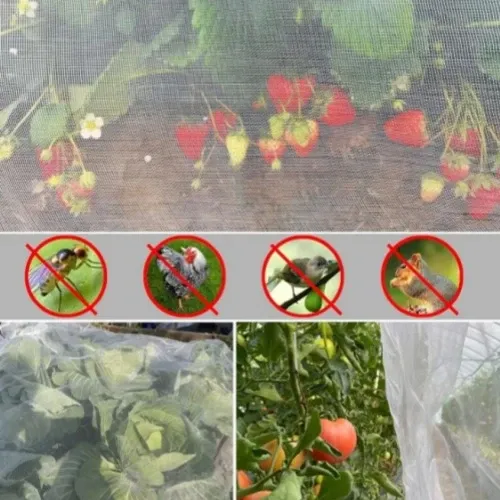-
 Afrikaans
Afrikaans -
 Albanian
Albanian -
 Amharic
Amharic -
 Arabic
Arabic -
 Armenian
Armenian -
 Azerbaijani
Azerbaijani -
 Basque
Basque -
 Belarusian
Belarusian -
 Bengali
Bengali -
 Bosnian
Bosnian -
 Bulgarian
Bulgarian -
 Catalan
Catalan -
 Cebuano
Cebuano -
 China
China -
 Corsican
Corsican -
 Croatian
Croatian -
 Czech
Czech -
 Danish
Danish -
 Dutch
Dutch -
 English
English -
 Esperanto
Esperanto -
 Estonian
Estonian -
 Finnish
Finnish -
 French
French -
 Frisian
Frisian -
 Galician
Galician -
 Georgian
Georgian -
 German
German -
 Greek
Greek -
 Gujarati
Gujarati -
 Haitian Creole
Haitian Creole -
 hausa
hausa -
 hawaiian
hawaiian -
 Hebrew
Hebrew -
 Hindi
Hindi -
 Miao
Miao -
 Hungarian
Hungarian -
 Icelandic
Icelandic -
 igbo
igbo -
 Indonesian
Indonesian -
 irish
irish -
 Italian
Italian -
 Japanese
Japanese -
 Javanese
Javanese -
 Kannada
Kannada -
 kazakh
kazakh -
 Khmer
Khmer -
 Rwandese
Rwandese -
 Korean
Korean -
 Kurdish
Kurdish -
 Kyrgyz
Kyrgyz -
 Lao
Lao -
 Latin
Latin -
 Latvian
Latvian -
 Lithuanian
Lithuanian -
 Luxembourgish
Luxembourgish -
 Macedonian
Macedonian -
 Malgashi
Malgashi -
 Malay
Malay -
 Malayalam
Malayalam -
 Maltese
Maltese -
 Maori
Maori -
 Marathi
Marathi -
 Mongolian
Mongolian -
 Myanmar
Myanmar -
 Nepali
Nepali -
 Norwegian
Norwegian -
 Norwegian
Norwegian -
 Occitan
Occitan -
 Pashto
Pashto -
 Persian
Persian -
 Polish
Polish -
 Portuguese
Portuguese -
 Punjabi
Punjabi -
 Romanian
Romanian -
 Russian
Russian -
 Samoan
Samoan -
 Scottish Gaelic
Scottish Gaelic -
 Serbian
Serbian -
 Sesotho
Sesotho -
 Shona
Shona -
 Sindhi
Sindhi -
 Sinhala
Sinhala -
 Slovak
Slovak -
 Slovenian
Slovenian -
 Somali
Somali -
 Spanish
Spanish -
 Sundanese
Sundanese -
 Swahili
Swahili -
 Swedish
Swedish -
 Tagalog
Tagalog -
 Tajik
Tajik -
 Tamil
Tamil -
 Tatar
Tatar -
 Telugu
Telugu -
 Thai
Thai -
 Turkish
Turkish -
 Turkmen
Turkmen -
 Ukrainian
Ukrainian -
 Urdu
Urdu -
 Uighur
Uighur -
 Uzbek
Uzbek -
 Vietnamese
Vietnamese -
 Welsh
Welsh -
 Bantu
Bantu -
 Yiddish
Yiddish -
 Yoruba
Yoruba -
 Zulu
Zulu
bird netting
The Importance of Bird Netting in Modern Agriculture
Birds are a vital part of our ecosystem, contributing to seed dispersal, pollination, and pest control. However, when it comes to agriculture, some bird species can become significant pests. The consumption of fruits, seeds, and crops by birds can result in substantial economic losses for farmers. In such scenarios, bird netting becomes an indispensable tool in modern farming practices, protecting crops while allowing farmers to coexist with wildlife.
Bird netting, often made from lightweight, durable materials such as polyethylene or polypropylene, is designed to create a physical barrier between birds and crops. It effectively prevents birds from accessing ripe fruits and vegetables while allowing sunlight and rain to nourish the plants. This method is not only effective but also eco-friendly, as it reduces the need for chemical deterrents or pesticides that can harm the environment.
One of the primary benefits of bird netting is its efficacy in safeguarding delicate crops such as berries, grapes, and cherries. These fruits are particularly attractive to various bird species, resulting in significant losses during the harvesting season. By covering the crops with netting, farmers can drastically reduce the risk of bird damage. Studies have shown that the use of bird netting can lead to an increase in yield by up to 75%, ultimately enhancing profitability for farmers.
In addition to protecting crops, bird netting also helps in maintaining the ecological balance
. In agricultural settings, the use of harmful chemicals to deter birds can have unintended consequences, affecting not only the target species but also other wildlife, beneficial insects, and even humans. Bird netting, on the other hand, provides a non-lethal deterrent that prevents crop damage while allowing birds to thrive in their natural habitats.bird netting

The installation of bird netting is a straightforward process and can be adapted to suit various types of crops and farm layouts. Farmers can choose from different types of netting, including mesh sizes and colors, to match their specific needs. The netting can be draped over hoops, frames, or directly over the plants, ensuring that it is secure and not likely to cause entanglement for birds. It is essential, however, to regularly check the netting for holes or damages that could allow birds to access the crops, as even the smallest gaps can be exploited.
Moreover, bird netting offers long-term economic benefits. While the initial investment in high-quality netting may seem daunting to some farmers, the reduction in crop loss and the potential for increased yields ultimately result in higher profits. Additionally, bird netting is reusable and can last several seasons if properly maintained, making it a cost-effective solution over time.
It is also worth noting that bird netting is versatile and can be used in urban settings where backyard gardens are increasingly popular. Home gardeners can employ bird netting to protect their vegetable patches, berry bushes, and fruit trees from local bird populations. This way, individuals can enjoy the fruits of their labor without worrying about missing out on their hard-earned harvests.
In conclusion, bird netting serves as a vital tool in the arsenal of modern agricultural practices. It provides a practical and humane solution to the challenge of bird-related crop loss while promoting ecological harmony. As farmers and gardeners continue to seek sustainable methods to protect their crops, bird netting stands out as an effective way to safeguard one's harvest while respecting nature. With proper installation and maintenance, bird netting can yield significant dividends for both large-scale farmers and small-scale gardeners, ensuring that we remain in tune with the rhythms of nature.
-
Shipping Plastic Bags for Every NeedNewsJul.24,2025
-
Safety Netting: Your Shield in ConstructionNewsJul.24,2025
-
Plastic Mesh Netting for Everyday UseNewsJul.24,2025
-
Nylon Netting for Every UseNewsJul.24,2025
-
Mesh Breeder Box for Fish TanksNewsJul.24,2025
-
Expanded Steel Mesh Offers Durable VersatilityNewsJul.24,2025











